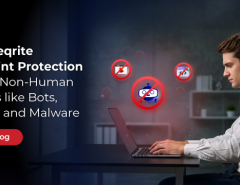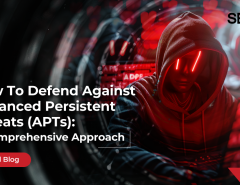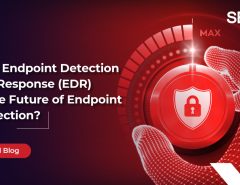2017 was a highly eventful year for cybersecurity experts as they incessantly kept combating the proliferating security incidents with considerable success. While a few incidents grabbed the headlines, a majority of cyber-attacks went unannounced. Now in 2018, it seems that the cybersecurity experts will have to tighten their safety net in order to keep the bigger issues at bay. The 2018 cyber-threat landscape looks quite expansive and it is probable that attacks will expand in volume and stature. Threat evolution and diversification is expected to go deeper into 2018. Amidst these apprehensions and presumptions, it is important that organizations identify the major cybersecurity ingredients for the current year.
Enlisting the Cybersecurity Ingredients
While we witnessed the likes of WannaCry creating global havoc in 2017, 2018 is expected to bring a whole new world of possibilities for the hackers.
- Threat Prevention
In 2018, organizations must emphasize heavily on threat prevention instead of devising cures and protective perimeters. Perimeter security has always been an important organizational concern but 2018 needs to be approached with a hint of proactivity. Majority of persistent threats cannot be combated with basic protective measures and therefore, it is advisable to have effective strategies in place for identifying and responding to the attacks, in advance. The basic ingredients of a threat prevention strategy in 2018 include remediation, detection and response.
Read More: Essential policies to rescue your organization from advanced cyber threats
- IoT
Internet of Things is going to be a ground-breaking concept in 2018, especially from the cybersecurity point of view. Although IoT vulnerabilities will keep expanding, enterprises will have to depend on a multi-layered security strategy for reaping the benefits of IoT adoption. Therefore, one basic cybersecurity ingredient in 2018 has to be IoT adoption but with contrasting motivations. While an erroneous approach towards the same might result in chaos and financial inadequacies, skillful adoption can improve the existing levels of productivity.
- Anti-Ransomware Tools
Needless to say, 2018 will see a massive growth in sophisticated ransomware attacks. While these threats and security incidents can penetrate organizations in several ways, organizations need to adopt anti-ransomware tools for combating the same.
- Cloud Security
Although 2017 already witnessed the global adoption of cloud security tools, 2018 will improve the coverage and focus specifically on cloud environments. With problems skyrocketing on a daily basis, enterprises must add accessibility, scalability and savings as the primary cloud security ingredients, for 2018.
- Automation
Most organizations fall prey to cyber-attacks due to the inefficient implementation of security measures. This is why automation will be a major cybersecurity ingredient in 2018, addressing machine learning, talent crisis and artificial intelligence.
- Incident Response Plan
With the ever-growing threat landscape, it may so happen that certain threats bypass the security solutions. This is where an organization requires an Incident Response Plan (IRP). With hackers innovating at greater speeds as compared to the vendors, preparation is the key to the success of an incident response plan. A functional IRP allows organizations to mitigate threats and minimize the existing loses, associated with a cyber-attack. Moreover, service providers who draft IRPs must look to improvise the same, depending upon the changing threat scenario.
With 2018 expected to be a year of threats, major breaches and strategic intrusions, incident response plan is one ingredient that must be given much importance.
The Role of Endpoint Security in 2018
While we have already looked into the security ingredients for 2018, it is the endpoint security solution that actually assimilates the mentioned aspects and knits them together as a cohesive and functional module.
- EPS solutions help organizations adhere to the diverse compliance requirements
- Advanced device control is one feature associated with the EPS module that safeguards the less obvious computing devices against the existing threats
- In addition to that, Endpoint Security plays a pivotal role when it comes to deploying security strategies like DLP, patch management, and asset management.
- In 2018, EPS solutions have bigger responsibilities to deal with, especially when it comes to monitoring the safety measures and correlating the available data. Endpoint suites come forth with data logs which give an indication regarding the persistent threats and the mitigation strategies.
Recent surveys have revealed that almost half of the existing organizations prefer working with an EPS solution and plan to adopt the same in 2018.
As an IT security partner for your business, Seqrite provides comprehensive endpoint security from advanced cyber threats. To know more, visit our website or




